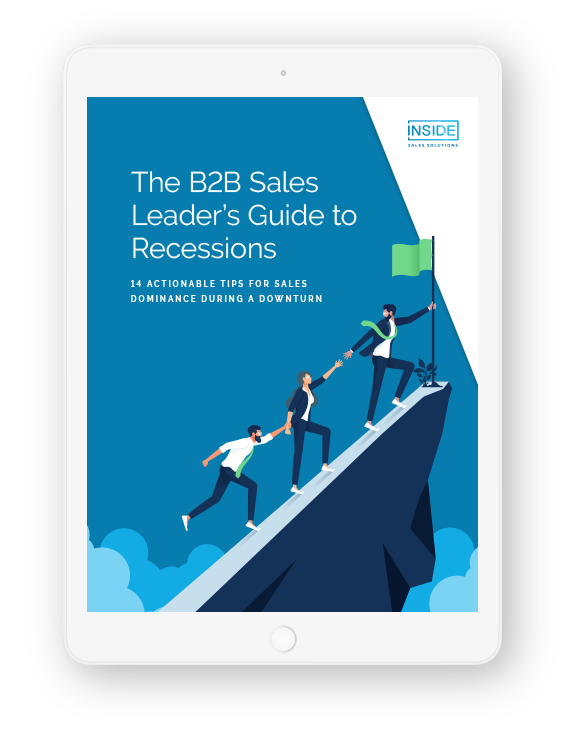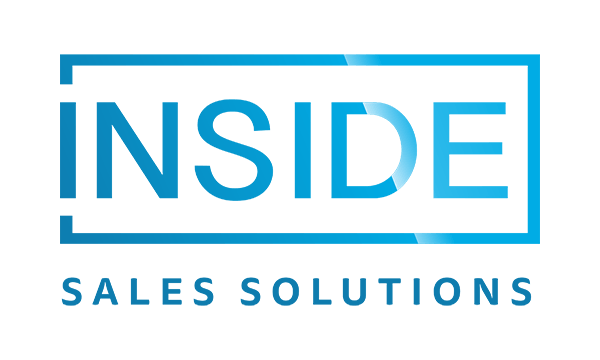This article was originally written in December 2020 and has since been updated with new discoveries and research in October 2025.
If you dream of high-performing sales reps and a healthier pipeline, then sales team metrics have to be your operating system. Why?
The right sales metrics are more than just numbers on a dashboard: They translate raw data into insight, reveal friction in your top-of-funnel, and show you where targeted improvements can directly lead to more revenue. In practice, these sales team metrics become the backbone of sales performance management, turning data into day-to-day decisions that lift win rates and pipeline health.
Sales teams across the board need to improve their skills and processes. For B2B sales, in particular, sales performance metrics allow you to diagnose bottlenecks with precision, so you know what action to take to stay ahead and win more deals.
Studies show that more than half of reps say selling is getting harder, while additional data indicates that new business has slowed in the SaaS market. Sales performance metrics allow you to diagnose bottlenecks with precision, so you know what action to take to stay ahead and win more deals.
Full disclosure: There are a lot of articles out there with sprawling lists of sales KPIs, obscure metrics, and one complex equation after another.
This is not one of those articles.
In this new guide, we’ve refreshed our original breakdown of key sales performance metrics to watch, adding five newer metrics (with practical benchmarks) to your list, to help you fine-tune your sales strategies.
Get the Ultimate Guide to Maximizing Channel Sales
Recap of the Original 4 Metrics
Before we add new signals to your dashboard, it’s worth revisiting the core sales team metrics you should be tracking to understand your performance fundamentals. Framed correctly, these KPIs connect everyday sales techniques with broader sales optimization goals, so your team improves both activity quality and revenue outcomes. These key performance indicators (KPIs) are the fastest way to diagnose where sales performance is strong and where revenue is leaking.
1. Activities to Engagement
This metric measures the efficacy of your sales engagement strategies. While it can be challenging to determine this one, given the variables involved (market awareness, ICP targeting, etc.), understanding and tracking interactions between your sales team and prospects is essential for informing strategy.
First, consider all the activities that go into your top-of-funnel prospect engagement process.
It probably includes most, if not all, of the following:
- Channels: How are you connecting/communicating with prospects? Emails, social selling, phone calls?
- Content: What materials are you creating and using to persuade the prospect and move them through the funnel?
- Automation: Is your process (or parts of your process) automated for more efficient workflows? Research shows that more than 30% of sales-related activities can already be automated.
- Platforms: What software are you using to optimize your workflows (CRM, data quality, email, appointment scheduling, etc.)?
- Tools: Which B2B lead generation tools (data providers, sequencing, intent, enrichment) are fueling the top-of-funnel and improving contact quality?
Begin with an audit of each activity to identify what’s working, what needs to be optimized, and what should be eliminated. Then, go a step further and determine the number of activities your reps are engaging in each day.
The average number of touchpoints reps hit before a sale is closed is around eight. This means the higher your volume of activities each day, the better your odds of moving prospects through the sales pipeline.
2. Engagement to Meetings Conversion
Once you have a baseline of which (and how many) activities are effectively working at the very top of the funnel, you can focus on the next level of sales team performance metrics.
While your efforts paid off with an initial bite, how “engaged” is the prospect, really? The benchmark for success is the conversion rate of meetings.
There are many best practices for top-of-funnel lead follow-up to convert more customers. Inside Sales Solutions (ISS), for example, has a 24-touchpoint process that mixes emails, calls, and messaging the prospect on LinkedIn.
Regardless of your process here, around 40% or more of the prospects your team engages should move on to a demo, consultation call, or other type of meeting.
3. Meetings to Pipeline Opportunities Conversion
Now that you’ve scheduled and conducted your meeting, how many of those prospects are taking the next step in the sales process and becoming opportunities in your pipeline? This metric monitors pipeline progression rate.
Perhaps it was a detailed and structured sales pitch. Maybe a high-level product demo.
Or just a more informal discussion to really get to know the prospect’s needs and pain points. In all circumstances, getting prospects to continue through the sales process after an initial meeting is crucial to any high-performing sales funnel.
On average, the ISS team sees 60-70 percent of their scheduled meetings moving to the next step of the sales process and into the pipeline.
4. Closed-Won Opportunities Percentage
They’re officially in the pipeline, at the bottom of the funnel. You have them right where you want them.
But is your team taking deals across the finish line? This metric expresses your typical close rate for various industries.
What sales team performance metrics should you realistically be hitting during this final phase?
Again, especially in B2B tech sales, there are many variables to overcome sales objections, get a contract signed, and welcome a new customer into your business.
But most enterprise sales teams will average 25-40 percent closed-won conversion from outbound-sourced opportunities, according to ISS. And these numbers should be much higher when the lead originated from inbound marketing efforts.
5 New Metrics to Track for Enhanced Sales Performance
Once you have the core sales team metrics dialed in, incremental (yet powerful) gains come from seeing what a classic dashboard can’t. Here are five newer metrics that leaders should be tracking in 2025 and beyond, which help you understand more nuances of your team’s performance.
1. Sales Conversion Rate
Sales conversion rate represents the percentage of leads that convert into closed deals. This metric is the clearest indicator of closing effectiveness. A healthy conversion rate indicates that messaging, pricing, and late-stage objection handling are aligned, or suggests where improvements are needed.
Benchmark: Determine conversion rate benchmarks by industry.
2. Average Deal Size
This KPI gauges the average revenue from each closed deal. It’s important because the average deal size reflects details like pricing strategy and overall sales health. When deal sizes grow (without hurting win rates or cycle time), it usually signals tighter qualification, clearer value, and effective multi-threading.
Benchmark: Typical deal sizes across various sectors.
3. Sales Cycle Length
Sales cycle length measures how long it takes from lead generation to closing a deal. When you sell faster, it typically means fewer stalls, lower acquisition cost, and faster cash. Longer sales cycles can indicate friction that is causing deals to be delayed.
Benchmark: Sales cycle length benchmarks for B2B versus B2C sales.
4. Customer Acquisition Cost (CAC)
Customer Acquisition Cost (CAC) refers to the cost incurred in acquiring each new customer, including total marketing and sales spend. CAC is crucial because it indicates sales efficiency and profitability, especially when compared to customer lifetime value (CLV). For example, a high CAC with a flat CLV can eat at your margins.
Benchmark: Average CAC across industries and how it relates to sales efficiency.
5. Quota Attainment
Quota attainment measures the percentage of salespeople who hit their sales targets, and it directly reflects sales team performance and goal achievement. Sustained under-attainment indicates issues somewhere in your sales lifecycle: You might need better-quality leads, stronger handoffs from SDRs to AEs, or coaching on deal strategy.
Benchmark: Standard quota attainment rates across different sales organizations.
Optimizing Sales Performance Based on Metrics
Sales metrics don’t just tell you the state of affairs: they tell you where problems are, and how to fix them. To improve your pipeline (and revenue), you have to read sales metrics like a map and learn not only how to diagnose problems in your process but also what actions to take.
Here’s how to approach metrics effectively:
- Know which common indicators to look for: Instead of getting lost in your dashboard, keep a few common indicators top-of-mind. For example:
- Lead-to-opportunity conversion rate: A low rate may signal poor lead quality or ineffective initial outreach.
- Time in stage: If opportunities spend excessive time in a particular pipeline stage (such as proposal or negotiation), this can indicate delays in follow-up, pricing misalignment, or unclear decision-making authority.
- Close rate by stage: A high number of deals dropping off at the same point (like after demos) may suggest issues with how value is communicated.
If you notice any of these trends, it’s likely time to take action:
- Isolate specific bottlenecks: To find the specific “problem areas” in your sales process, start by mapping your entire sales funnel and overlaying it with performance metrics at each stage. Then, benchmark each stage against industry standards before using internal data to identify patterns. Once identified, these bottlenecks become strategic openings for targeted improvement.
- Coach with precision: To improve efficiency in key metrics, provide your sales team with coaching. It should be tailored to your team’s current performance and aligned with business goals. For example: Low activity levels? The coach provides reps with guidance on time management and prioritization using activity metrics like calls per day, emails sent, or meetings booked. Low win rates? Review recorded calls to provide feedback on core skills like objection handling, value articulation, and closing techniques.
Treat every bottleneck you uncover as a blueprint for better performance. Map, measure, and act, then coach with intent and iterate fast.
When improvement is targeted and tracked, small changes compound into outsized results. Momentum follows clarity, and clarity comes from data-driven decisions you make today.
Taking Action on Sales Metrics
The fastest way to improve sales team performance isn’t with guesswork. We evaluate sales performance using this updated set of sales team metrics.
By auditing and monitoring your funnel, you can see where deals slow down, where quality slips. And where coaching or capacity will create the biggest lift.
Ready to turn your dashboard into a growth plan?
Contact Inside Sales Solutions for a consultation on sales optimization, sales team outsourcing, and the exact plays to boost your metrics and performance.
Considering Outsourced Sales Development?
Take a peak at how B2B sales teams can overcome economic uncertainty.


